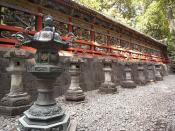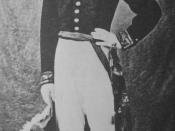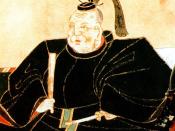From 1467-1600, Japan was a warring state with chaos and civil disorder. There was no central authority. People were fighting each other for land. Territorial lords, daimyos, were competing fiercely with one another for national domination at the time. During the late 16th century, three shogun, who each ruled from different times, tried to unify Japan. The first shogun was named Nobunaga (1534-1582). He was a good leader, who established policies like the closed-door policy. He was then assassinated by the Hideyoshi, who later became the second shogun. Then in 1603, Tokugawa became the first shogun to successfully unify Japan. His shogunate endured for more than 260 year, the largest period of uninterrupted peace Japan ever enjoyed.
Tokugawa shogunate maintained order through social and political control. In an effort to prevent European influences from destabilizing the land, the Tokugawa shoguns closely controlled relations between Japan and the outside world.
They felt foreigners could cause serious problems by making alliances with daimyo and supplying them with weapons. This closed country policy maintained stability and peace because it didn't change Japanese culture. The shogunate also made sure no one had weapons through the use of sword hunts. The shoguns instituted the policy of "alternate attendance" which required daimyo to maintain their families at Edo and spend every other year at the Tokugawa court. This policy enabled shoguns to keep an eye on the daimyo, and as a side effect it encouraged daimyo to spend their money on lavish residences and comfortable lives in Edo rather than investing it in military forces that could challenge the shogunate. The shoguns also subjected marriage alliances between daimyo families to shogunate, discouraged the daimyo from visiting each other, and required daimyo to obtain permits for construction work on their castles. Even meetings between...


